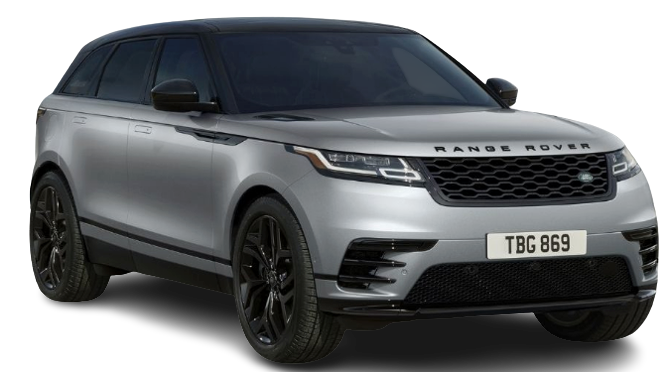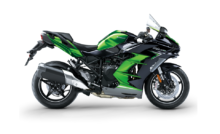2023 Land Rover RANGE ROVER VELAR WARNING AND INFORMATION LAMPS Owner Manual


2023 Land Rover RANGE ROVER VELAR WARNING AND INFORMATION LAMPS


OVERVIEW
The following warning and information lamps may illuminate in the instrument panel:
See BATTERY CHARGE (RED).
USA: See BRAKE (RED).
Canada: See BRAKE (RED).
See CRITICAL WARNING MESSAGE (RED).
USA: ELECTRIC PARKING BRAKE (EPB) (RED).
Canada: See ELECTRIC PARKING BRAKE (EPB) (RED).
See SEAT BELT (RED).
See AIR BAG (YELLOW).
See ANTI-LOCK BRAKING SYSTEM (ABS) (YELLOW).
USA: See BRAKE (YELLOW).
Canada: See BRAKE (YELLOW).
See DRIVER CONDITION MONITOR (YELLOW).
See DYNAMIC STABILITY CONTROL (DSC) (YELLOW).
See DYNAMIC STABILITY CONTROL (DSC) OFF (YELLOW).
See EXTERNAL TEMPERATURE (YELLOW).
See GENERAL WARNING AND INFORMATION MESSAGE (YELLOW).
See LOW FUEL WARNING (YELLOW).
See POWER STEERING FAULT (YELLOW).
See TIRE PRESSURE MONITORING SYSTEM (TPMS) (YELLOW).
See ADAPTIVE CRUISE CONTROL ACTIVE (GREEN).
See ADAPTIVE SPEED LIMITER (GREEN).
See ALL TERRAIN PROGRESS CONTROL (ATPC) (GREEN).
See BRAKE HOLD (GREEN).
See ECO COACH PEDAL NOT PRESSED (GREEN).
See ECO COACH PEDAL PRESSED (GREEN).
See FOLLOW MODE (GREEN).
See GEARSHIFT (GREEN).
See HILL DESCENT CONTROL (HDC) (GREEN).
See LOW BEAM (GREEN).
See SIDE LIGHTS (GREEN).
See STEERING ASSIST ACTIVE (GREEN).
See TRAILER TURN SIGNALS (GREEN).
See TURN SIGNALS (GREEN).
See HIGH BEAM (BLUE).
See PARK ASSIST AUTO SEARCH (BLUE).
See STEERING ASSIST NOT ACTIVE (GRAY).
See AUTO LIGHTS (WHITE) .
See AUTO STOP/START INHIBIT (WHITE).
See AUTO STOP/START OFF (WHITE).
See DRIVER CONDITION MONITOR (WHITE).
See LOW TRACTION LAUNCH (WHITE).
See TIRE PRESSURE MONITORING SYSTEM (TPMS) LIGHT LOAD (WHITE).
WARNING LAMPS AND INDICATORS
Do not ignore warning lamps or indicators. Take appropriate action as soon as possible. Failure to do so may result in death or serious injury, or serious damage to the vehicle.
Red warning lamps are for primary warnings. A primary warning must be investigated immediately by the driver or qualified assistance, before continuing.
Amber and yellow warning lamps are for secondary warnings. Some indicate that a vehicle system is active, and others indicate that the driver must take action and seek qualified assistance as soon as possible.
Green and blue lamps within the instrument panel indicate a system’s status.
LAMP CHECK
Not all warning lamps are included in the check, e.g., high beam headlights and turn signals.
If a trailer with LED lights is connected to the trailer socket, the lamp check may not be performed.
A warning lamp check is initiated when the vehicle’s ignition system is switched on. The check lasts for 3 seconds, except for the air bag warning lamp which remains on for 6 seconds. If any warning lamp remains on after this period, investigate the cause before driving. Some warning lamps have associated messages displayed in the instrument panel.
BATTERY CHARGE (RED)
The 12V battery charge warning lamp illuminates, as a bulb check, when the vehicle’s ignition is switched on.
The lamp extinguishes when the engine is started.
If the lamp remains on or illuminates while driving, there is a fault with the battery charging system. The instrument panel displays a warning message. Seek qualified assistance urgently.
BRAKE (RED)
Do not drive if the instrument panel displays a message indicating a low brake fluid level. Check the brake fluid level and top up, as necessary. If necessary, seek qualified assistance before continuing. Driving with low brake fluid can cause increased braking distance or brake failure, and may lead to a collision. A collision can potentially result in serious injury or death.
USA.
Canada.
The brake warning lamp illuminates briefly, as a bulb checks when the vehicle’s ignition is switched on.
If the lamp illuminates red while driving, suspect a low brake fluid level or a fault with the braking system.
Stop the vehicle as soon as safety permits. Check and top up the brake fluid, if necessary. If the lamp remains illuminated, seek qualified assistance before continuing.
CRITICAL WARNING MESSAGE (RED)
The critical warning message lamp illuminates when a relevant message displays in the instrument panel.
Stop the vehicle as soon as safety permits, and investigate the cause of the warning.
ELECTRIC PARKING BRAKE (EPB) (RED)
USA.
Canada.
The Electric Parking Brake (EPB) warning lamp illuminates if the EPB is correctly applied.
If the lamp flashes, a fault has been detected. Seek qualified assistance urgently.
ENGINE TEMPERATURE (RED)
The engine temperature warning lamp illuminates when the engine’s temperature is too high.
The instrument panel also displays a warning message.
Stop the vehicle as soon as safety permits. Seek qualified assistance before continuing.
LANE KEEPS ASSISTING (RED)
The red lane keeps assist warning lamp illuminates if the vehicle crosses a lane marking without the appropriate turn signal being operated.
The illumination of the lamp is accompanied by a vibration, felt through the steering wheel.
The left or right lane illuminates, depending on which lane boundary is being crossed.
LOW OIL PRESSURE (RED)
If the low oil pressure warning lamp flashes or illuminates while driving, stop the vehicle as soon as safety permits. Switch off the engine immediately.
Check and top up the oil level, if necessary. Start the engine. If the lamp remains illuminated, switch the engine off immediately. Seek qualified assistance before continuing.
SEAT BELT (RED)
Objects on the front passenger seat may activate the seat belt reminder feature. It is recommended that any objects placed on the front passenger seat are secured using the seat belt. See SEAT BELT OPERATION.
When the vehicle is in motion and seats are occupied, the warning lamp illuminates, accompanied by a chime if the seat belt is unbuckled.
The lamp extinguishes when the relevant seat belt is buckled.
AIR BAG (YELLOW)
The air bag warning lamp illuminates, as a bulb check, when the vehicle’s ignition is switched on.
The lamp extinguishes after 6 seconds.
If the lamp illuminates again, after the bulb check or while driving, there is a fault with the air bag system. Seek qualified assistance as soon as possible.
ANTI-LOCK BRAKING SYSTEM (ABS) (YELLOW)
If the Anti-lock Braking System (ABS) and brake warning lamps illuminate at the same time, do not drive the vehicle until the fault is rectified. The braking system may not be functioning correctly, which may, in turn, lead to a loss of control, potentially causing an accident. Seek qualified assistance immediately.
The driver is responsible for operating the vehicle in an appropriate manner for the prevailing conditions at all times. Failure to do so may lead to an accident, potentially resulting in serious injury or death.
The ABS warning lamp illuminates briefly, as a bulb check, when the vehicle’s ignition is switched on.
If the lamp remains on, or illuminates while driving, there is a fault with the ABS system. Drive with care, avoiding heavy brake pedal application. Seek qualified assistance urgently.
BRAKE (YELLOW)
USA.
Canada.
The brake warning lamp illuminates briefly, as a bulb check, when the vehicle’s ignition is switched on.
If the lamp illuminates yellow after starting the engine, or while driving, suspect worn brake pads or a fault with the braking system. The vehicle can still be driven with care. Seek qualified assistance urgently.
CHECK ENGINE (YELLOW)
The check engine warning lamp illuminates when the vehicle’s ignition is switched on.
The lamp remains illuminated until the engine starts. If the lamp illuminates when the engine is running, an emissions-related fault has been detected. The vehicle remains safe to drive with the lamp illuminated, although qualified assistance should be sought as soon as possible.
With the lamp illuminated, the vehicle may enter limp-home mode. Limp-home mode reduces vehicle performance to safeguard against any further damage to the vehicle. See LIMP-HOME MODE.
If the check engine warning lamp flashes when the engine is running, reduce the vehicle’s speed as soon as it is safe to do so. Seek qualified assistance immediately.
DRIVER CONDITION MONITOR (YELLOW)
The driver condition monitor warning lamp illuminates yellow when the driver condition monitor system determines that the driver is presenting signs of high fatigue levels.
The instrument panel also displays a warning message.
DYNAMIC STABILITY CONTROL (DSC) (YELLOW)
The Dynamic Stability Control (DSC) lamp flashes when the system is active.
If there is a fault with the system, it remains illuminated and the instrument panel displays a warning message.
The vehicle can still be driven, but without DSC assistance. Seek qualified assistance as soon as possible.
DYNAMIC STABILITY CONTROL (DSC) OFF (YELLOW)
The Dynamic Stability Control (DSC) OFF warning lamp illuminates when the system is switched off.
The lamp is accompanied by a chime and a confirmation message in the instrument panel.
EXTERNAL TEMPERATURE (YELLOW)
The external temperature lamp illuminates when the external temperature is low enough that ice may be present on the road.
GENERAL WARNING AND INFORMATION MESSAGE (YELLOW)
The general warning and information message lamp illuminate when a non-critical warning message, or an information message, is available in the instrument panel.
LOW FUEL WARNING (YELLOW)
The low fuel warning lamp illuminates yellow when the fuel level is low. Refuel at the earliest opportunity.
The arrow shows which side of the vehicle the fuel filler flap is located.
POWER STEERING FAULT (YELLOW)
The power steering lamp illuminates when there is a fault in the system. The vehicle can still be driven with care. Stop the vehicle at a safe place as soon as possible and carry out an ignition cycle. If the warning lamp remains illuminated after an ignition cycle, contact a retailer/authorized repairer.
REAR FOG LIGHTS (YELLOW)
The rear fog lights indicator lamp illuminates yellow when the rear fog lights are switched on.
TIRE PRESSURE MONITORING SYSTEM (TPMS) (YELLOW)
The Tire Pressure Monitoring System (TPMS) lamp illuminates yellow to warn that one or more tires are significantly under-inflated.
Stop the vehicle as soon as possible, when safe to do so. Check the tire pressures. Inflate to the recommended pressure.
The lamp flashes to indicate a system fault.
ADAPTIVE CRUISE CONTROL ACTIVE (GREEN)
The adaptive cruise control lamp illuminates when the adaptive cruise control feature is active.
ADAPTIVE SPEED LIMITER (GREEN)
The adaptive speed limiter lamp illuminates when the adaptive speed limiter feature is switched on.
ALL TERRAIN PROGRESS CONTROL (ATPC) (GREEN)
The All Terrain Progress Control (ATPC) lamp illuminates to confirm that the ATPC system is enabled.
AUTO STOP/START (GREEN)
The auto stop/start lamp illuminates when the engine is shut down by the auto stop/start system.
Other warnings normally associated with an engine shutdown do not illuminate during an engine shutdown by the auto stop/start system.
BRAKE HOLD (GREEN)
The brake hold lamp illuminates when a brake hold function is activated.
CRUISE CONTROL (GREEN)
The cruise control lamp illuminates green when cruise control is active.
ECO COACH PEDAL NOT PRESSED (GREEN)
The ECO coach pedal not pressed lamp illuminates green to advise the driver when it is possible to lift off of the accelerator pedal.
ECO COACH PEDAL PRESSED (GREEN)
The ECO coach lamp illuminates green when the feature is active.
FOLLOW MODE (GREEN)
The follow mode lamp illuminates green when the adaptive cruise control system is in follow mode.
Recent Posts
VW Jetta Engine Fuse Box Diagram
Access the comprehensive 2010-2018 VW Jetta Passenger Fuse Box Diagram to troubleshoot electrical issues effectively.…
VW Jetta Passenger Fuse Box Diagram
Explore the comprehensive VW Jetta Passenger Fuse Box Diagram to troubleshoot electrical issues effectively. Understand…
2023 Ford F-150 Lightning Fuse Box Diagram
Under Hood Fuse Box Location Remove the front luggage compartment cover. Under Hood Fuse Box…
2022 Kawasaki NINJA H2 SX SE Brake Lever Adjuster Owner’s Manual
2022 Kawasaki NINJA H2 SX SE Brake Lever Adjuster Owner's Manual NOTICE Only adjust the front…
2023 Land Rover Range Rover Evoque Exiting The Vehicle Owners Manual
2023 Land Rover Range Rover Evoque Exiting The Vehicle SINGLE LOCKING WARNING Before exiting the…
2023 Land Rover Range Rover Evoque Front Seats Owners Manual
2023 Land Rover Range Rover Evoque Front Seats FRONT SEAT SAFETY Make sure to read…


